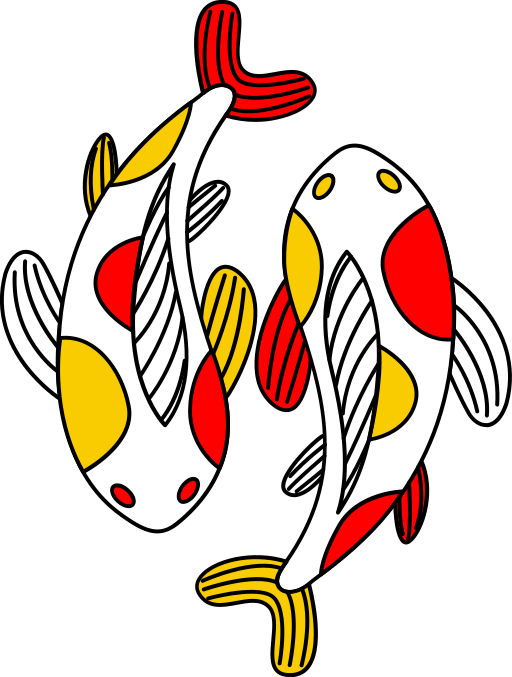As spring approaches in Japan, anticipation for the cherry blossom viewing season grows. For many, it’s a time of personal rejuvenation and witnessing nature’s awakening. However, for marketers, it presents a unique opportunity to harness the rare phenomenon of sakura, a chance they seize with remarkable success.
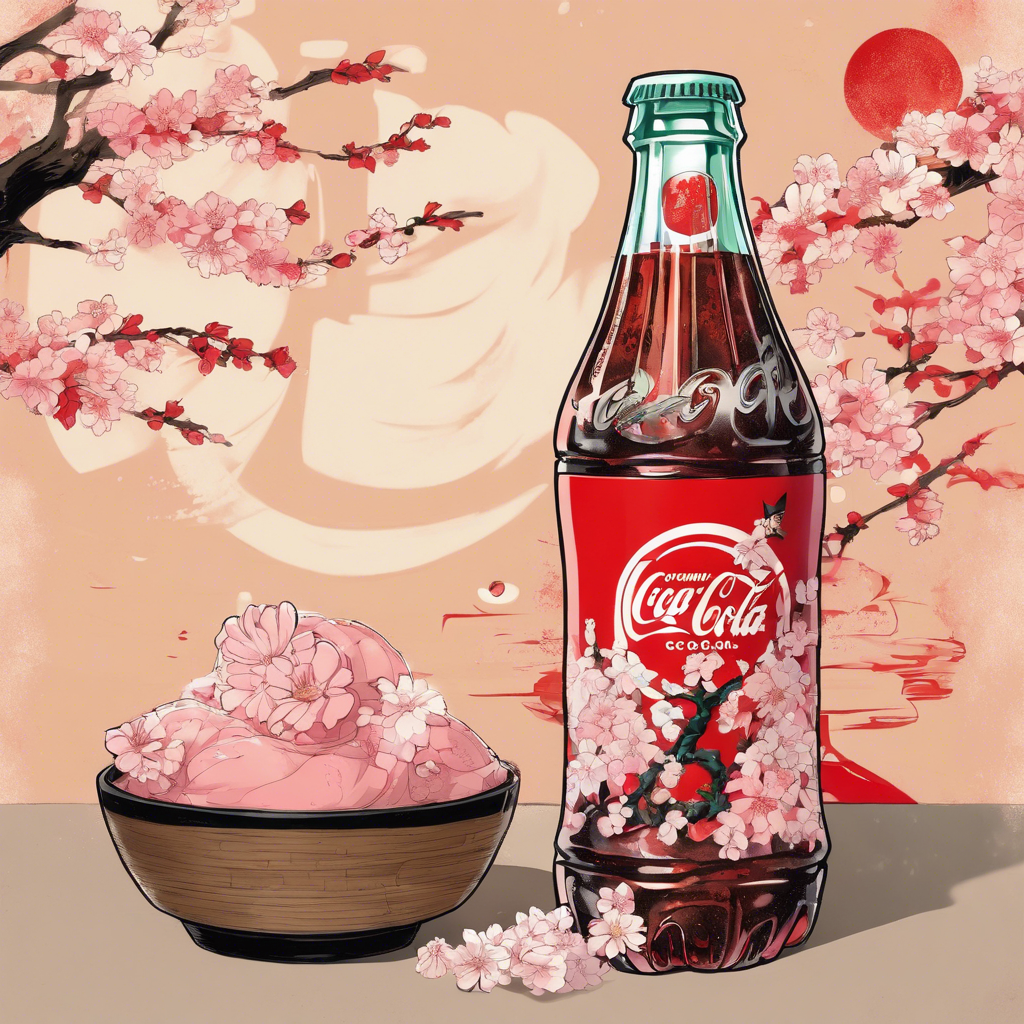
Unveiling the Beauty of Hanami: Exploring its Cultural Significance and the Secret to Marketing Success
Sakura, or cherry blossoms, hold a special place in Japanese culture, symbolizing beauty, renewal, and the transient nature of life. It’s no surprise then, that Sakura symbolism thrives in Japanese marketing campaigns. Here’s why:
- Cultural Significance: Sakura is deeply ingrained in Japanese culture, with centuries-old traditions like hanami (cherry blossom viewing) celebrating its beauty. Marketers leverage this cultural significance to create campaigns that resonate with consumers on an emotional level, tapping into feelings of nostalgia, pride, and appreciation for nature.
- Seasonal Appeal: Sakura season marks the arrival of spring, a time of renewal and celebration in Japan. Marketing campaigns that coincide with this season capitalize on the heightened emotional state of consumers, offering products and experiences that align with the festive atmosphere of hanami gatherings and cherry blossom viewing.
- Aesthetic Allure: The delicate and ephemeral beauty of cherry blossoms appeals to the Japanese aesthetic sensibility, known as «wabi-sabi,» which appreciates impermanence and imperfection. Marketing campaigns featuring sakura imagery convey a sense of elegance, simplicity, and tranquility that resonates with Japanese consumers.
- Brand Association: Companies that incorporate Sakura motifs into their marketing campaigns can strengthen their brand association with positive emotions and cultural values. By aligning themselves with Sakura symbolism, brands can enhance their image as being culturally attuned, authentic, and in harmony with Japanese traditions.
- Social Media Engagement: Sakura season is highly photogenic, with people sharing countless photos of cherry blossoms on social media platforms. Marketing campaigns that leverage Sakura imagery can generate significant social media engagement, with consumers eager to share and interact with content featuring these iconic flowers.
How Businesses Profit During Sakura Season
One day, my friend told me that she had bought a Hanami Dango Frappuccino, and it wasn’t very good. Later, she purchased a sweet snack with sakura flavor, which also didn’t meet her expectations. However, I hesitate to entirely criticize the use of the sakura name on the packaging, as there was a time when I bought mochi with sakura flavor, and it was delicious. However, the truth remains that sakura doesn’t have a distinct flavor. Upon reading about cherry blossoms, one will discover that they are simply trees with blooming flowers; they do not bear fruits.
During Sakura season, businesses capitalize on the widespread enthusiasm for cherry blossoms to boost their profits. This period, marked by the blooming of cherry blossoms, presents lucrative opportunities for various industries. Restaurants and cafes introduce sakura-themed menus, offering delicacies infused with cherry blossom flavors to attract customers. Retailers release limited-edition sakura-themed merchandise, from clothing to accessories, catering to consumers seeking unique seasonal products. Tourism agencies promote hanami tours and packages, enticing travelers to visit Japan during this picturesque time. Additionally, hotels and accommodations offer special sakura-viewing packages, attracting visitors looking to experience the beauty of cherry blossoms firsthand. Overall, Sakura season serves as a catalyst for businesses to innovate and capitalize on the cultural significance and aesthetic appeal of cherry blossoms, driving sales and revenue growth.
Marketing campaigns incorporating cherry blossom themes
Starbucks Sakura Beverages
When considering launching a cherry blossom marketing campaign, the first thing that likely comes to mind is Starbucks. Starbucks frequently launches seasonal campaigns featuring Sakura-themed beverages and merchandise. For example, they offer Sakura-flavored lattes, frappuccinos, and even Sakura-themed mugs and tumblers during the cherry blossom season.
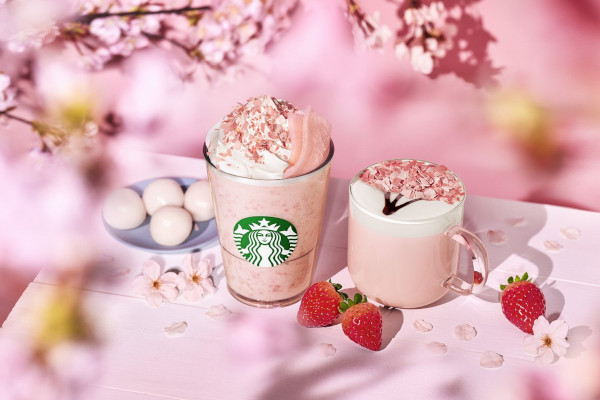
Coca-Cola Sakura-themed bottle
Then, obviously, it’s the globally recognized Coca-Cola. Established in 1957 after several decades of highly restricted post-war trade policies, Coca-Cola Japan has undoubtedly become the most well-known beverage brand and a common household name.
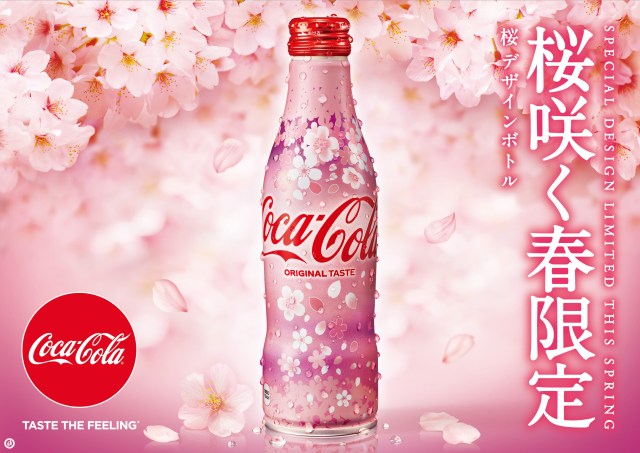
Its significant debut after the easing of government sanctions in 1956 was during the Tokyo Olympics of 1964, where Coca-Cola sales doubled each year until the Sapporo Winter Olympics in 1972. With the impending Tokyo 2020 Olympics, one can only imagine the innovative marketing strategies the company has in store.
Coca-Cola also holds the distinction of being one of the first drinks ever sold in the iconic Japanese vending machines, remaining one of the most profitable products within them today.
Deviating from its traditional roots, the Atlanta-born beverage has taken on a new persona in Japan, especially during cherry blossom season. As winter transitions into spring, Coca-Cola bottles and cases nationwide are adorned with pink sakura blossoms and marketing slogans, perfectly capturing the essence of the season.
Additionally, slimmer Coca-Cola bottles are specifically produced for cherry blossom-viewing picnics, as they’re easier to hold while taking pictures.
Similar to Coca-Cola’s surprising Japanese persona, whiskey brand Jack Daniel’s has also experienced a surge in sales during sakura season. Hanami parties and picnics are well-known opportunities for co-workers, friends, and family to unwind and enjoy a few drinks while basking in the springtime atmosphere.
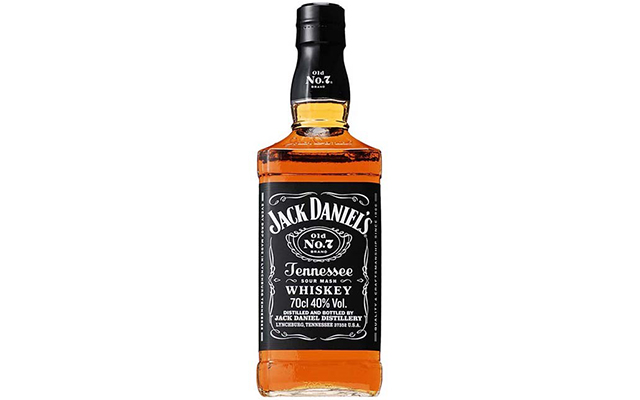

Indeed, Hanami season has become synonymous with the consumption of alcoholic beverages, prompting liquor companies across the country to join in the festivities. Jack Daniel’s, known for its rugged and masculine image originating from Tennessee, is no exception.
Following the success of their «It’s Jack» promotion in 2017, anticipation was high for Jack Daniel’s marketing strategy in 2018. The introduction of the «black blossom» limited edition sakura-themed packaging in February 2018 took customers by surprise. It marked the first time the brand altered its packaging to cater to the Japanese market. The juxtaposition of Jack Daniel’s masculine image with the delicate cherry blossoms intrigued consumers.
Despite initial skepticism, Jack Daniel’s marketing efforts proved successful. The «black blossom» box garnered significant attention and changed perceptions about whiskey’s suitability for springtime festivities. It served as a testament to the brand’s adaptability and ability to resonate with Japanese consumers during sakura season.
Asahi sakura season
The Sakura Asahi marketing campaign is a strategic initiative by Asahi Breweries to capitalize on the cultural significance of cherry blossoms in Japan. Asahi, one of the leading beer brands in Japan, leverages the allure of sakura to create limited-edition products and engaging marketing campaigns that resonate with consumers during cherry blossom season.
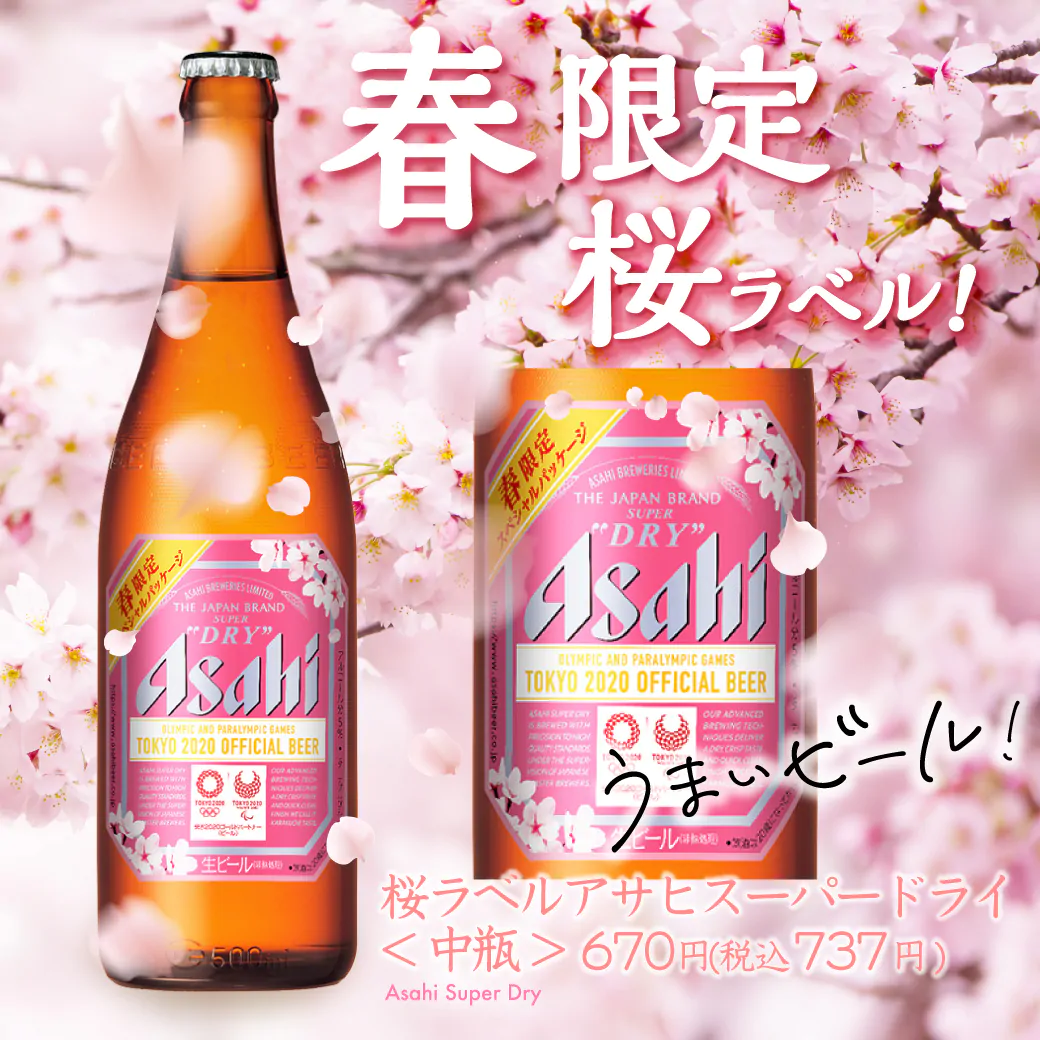
One notable aspect of the Sakura Asahi campaign is the introduction of special sakura-themed packaging for its beer products. During the cherry blossom season, Asahi releases limited-edition cans and bottles adorned with sakura motifs and vibrant pink hues. This unique packaging not only captures the essence of spring but also appeals to consumers seeking a festive and refreshing beverage to enjoy during hanami (cherry blossom viewing) parties and picnics.
In addition to its sakura-themed packaging, Asahi often launches multimedia marketing campaigns to promote its Sakura Asahi products. These campaigns may include television commercials, digital advertisements, and social media promotions featuring sakura imagery and slogans. By integrating sakura symbolism into its marketing materials, Asahi effectively taps into the emotional connection that Japanese consumers have with cherry blossoms, enhancing brand visibility and loyalty.

Furthermore, Asahi’s Sakura marketing campaign extends beyond product packaging and advertising to include special promotions and collaborations. For example, Asahi may partner with popular hanami spots or cherry blossom festivals to sponsor events or offer exclusive discounts on its Sakura Asahi products. This strategic partnership not only enhances Asahi’s brand presence at cherry blossom-related events but also creates memorable experiences for consumers.
Overall, the Sakura Asahi marketing campaign demonstrates Asahi Breweries’ ability to creatively incorporate Japanese cultural traditions into its brand strategy. By leveraging the allure of cherry blossoms, Asahi effectively engages consumers and cultivates brand loyalty during the vibrant cherry blossom season in Japan.
Blossom Your Taste Buds: Exploring Cherry Blossom Marketing with Food Brands
Sakura-flavored KitKat by Nestlé Japan
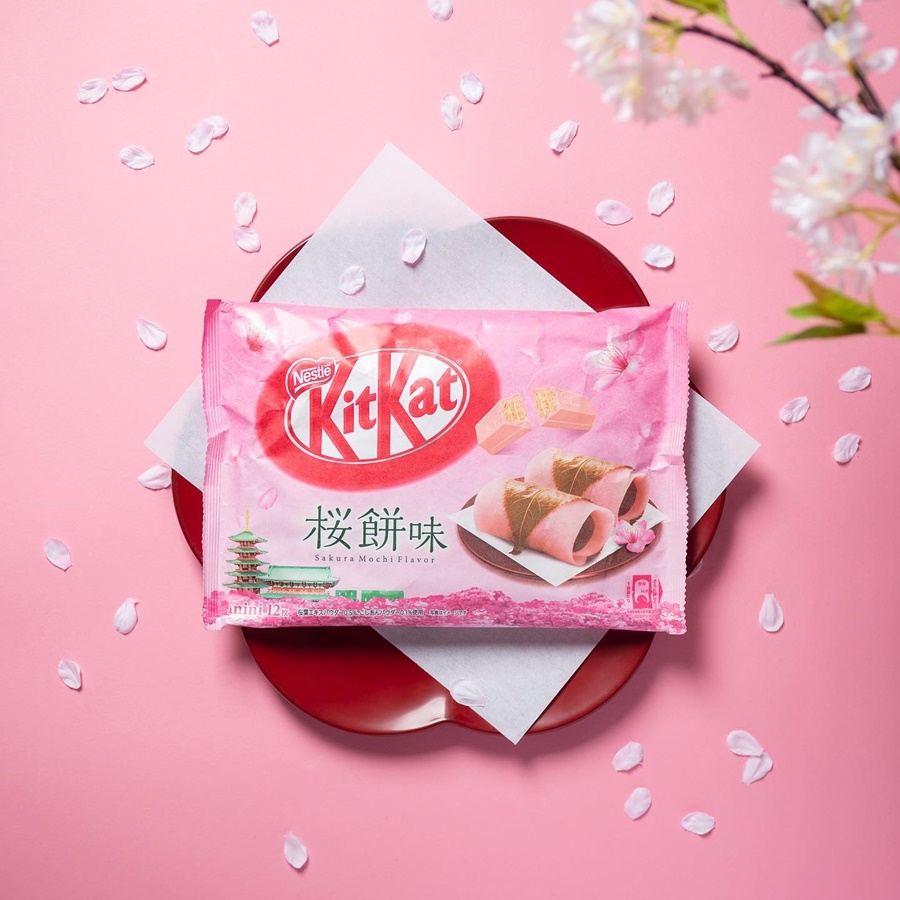
In Japan, the love affair with Kit Kat transcends the ordinary, boasting over 300 tantalizing flavors since the turn of the millennium. Yes, you read that correctly — over 300 flavors. But why such an astounding variety? Well, it’s not just about chocolate; it’s about culture, tradition, and a touch of superstition.
The Japanese pronunciation of Kit Kat, «kitto katto» bears a striking resemblance to the phrase きっと勝つ «kitto katsu,» meaning «to surely win». This linguistic quirk has transformed Kit Kat into a beloved good-luck charm, particularly cherished by students facing exams or challenges.
In the realm of confectionery, Nestlé’s Kit Kat stands as an icon of indulgence and innovation. But in Japan, it’s more than just a chocolate bar — it’s a cultural phenomenon. Nestlé’s marketing prowess shines brightly with the launch of its Sakura Kit Kat, a limited-edition delight that encapsulates the essence of Japan’s beloved cherry blossom season.
The journey begins with Nestlé’s astute understanding of Japanese culture. Recognizing the nation’s fervent obsession with sakura and the tradition of hanami (flower viewing), Nestlé crafted a marketing campaign that tapped into the emotional resonance of these cherished customs. With the Sakura Kit Kat as its centerpiece, the campaign sought to evoke feelings of nostalgia, joy, and anticipation, inviting consumers to partake in a sensory celebration of springtime.
Central to the campaign was the packaging design, adorned with delicate sakura blossoms in vibrant shades of pink. Each Sakura Kit Kat became a miniature work of art, a symbol of the fleeting beauty and ephemeral nature of cherry blossoms. Through strategic placement in stores and eye-catching displays, Nestlé ensured that its Sakura Kit Kat captured the attention of shoppers, beckoning them to experience the magic within.
Sakura Donuts by Mister Donut
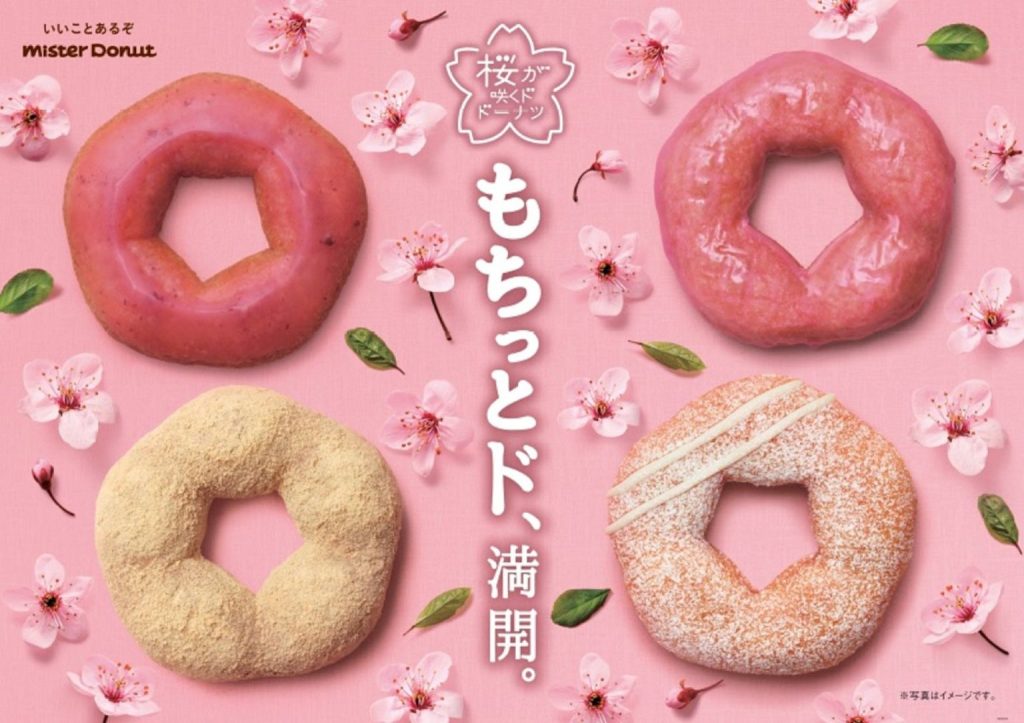
Central to the campaign was the product itself — Sakura Donuts that tantalized the taste buds with their delicate floral flavor and ethereal pink hue. Each bite was a sensory journey through the sights and tastes of hanami season, transporting consumers to tranquil cherry blossom picnics beneath blooming trees.
But Mister Donut didn’t stop there. The company employed a multi-faceted marketing approach, utilizing vibrant packaging, eye-catching displays, and strategic social media campaigns to capture the attention of consumers. From Instagram-worthy photos of Sakura Donuts against a backdrop of cherry blossoms to engaging promotions and giveaways, the campaign sparked a wave of excitement and enthusiasm among donut lovers across Japan.
McDonald’s Sakura campaign
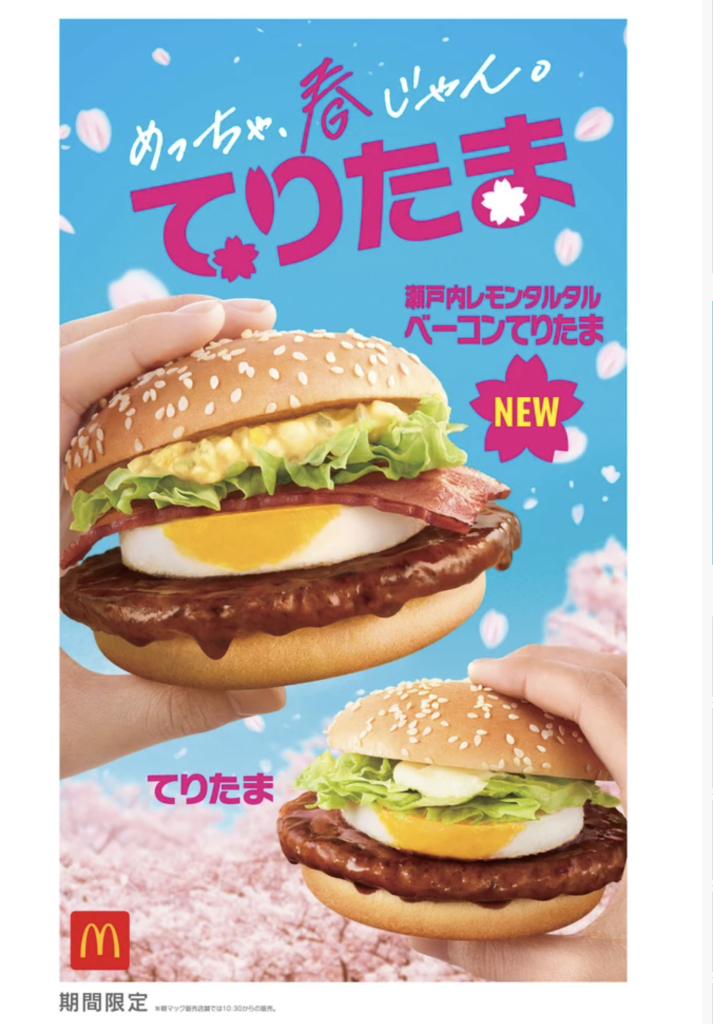
In the competitive landscape of fast food, McDonald’s is no stranger to innovative marketing strategies. But in Japan, the brand took its promotional prowess to new heights with a Sakura-themed campaign that captured the hearts and appetites of consumers across the nation.
At the heart of McDonald’s Sakura campaign was a fusion of tradition and modernity, blending the allure of cherry blossoms with the convenience and accessibility of fast food. With strategic menu additions like Sakura Teritama burgers featuring a tantalizing combination of teriyaki sauce and sakura-themed toppings to Sakura McFizz drinks with a refreshing floral twist and captivating visuals, McDonald’s transformed its restaurants into vibrant hubs of sakura-inspired delight.
The marketing campaign has been a hit with Japanese consumers, who are known for their love of seasonal products and limited-time offers. By tapping into the cultural significance of cherry blossom, McDonald’s has created a sense of urgency among customers, encouraging them to try the Sakura Teritama burger before it’s gone.
Blooming Beauty: Cherry Blossom Marketing Collabs with Skin, Hair, and Makeup Brands
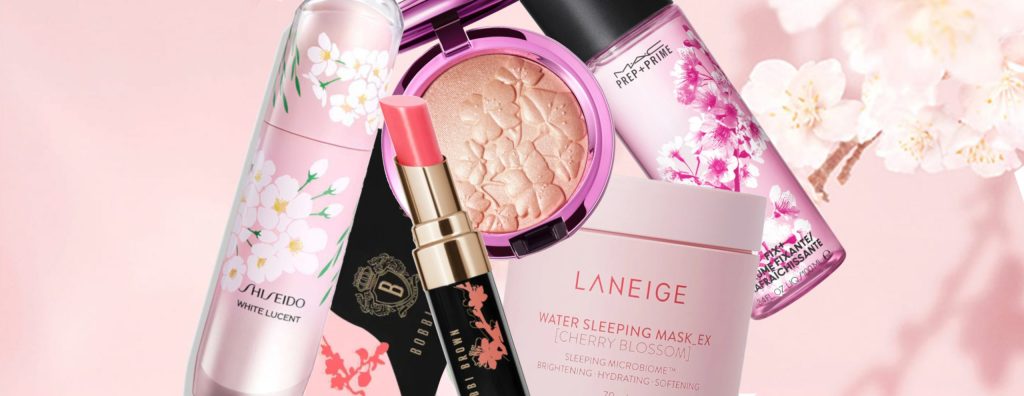
Sakura, or cherry blossoms, are not only revered for their ephemeral beauty but also for their skincare benefits. Rich in antioxidants and soothing properties, sakura extracts are believed to help nourish and rejuvenate the skin, making them a popular ingredient in beauty products.
While scientific studies on the specific effects of sakura on the skin and hair are limited, many consumers appreciate the sensory experience and cultural significance associated with sakura-infused beauty products. The symbolic allure of cherry blossoms, coupled with their potential skincare benefits, has made sakura a popular ingredient in the beauty industry, offering consumers a touch of springtime bliss in their daily skincare and haircare routines.
But beauty brands have capitalized on this by incorporating sakura extracts into a wide range of skincare and haircare products. From moisturizers and serums to shampoos and conditioners, sakura-infused formulations promise to hydrate, brighten, and revitalize the skin and hair, offering consumers a sensory experience reminiscent of springtime bliss.
Marketing campaigns for these sakura-themed beauty products often highlight the natural beauty and purity associated with cherry blossoms. Advertisements feature imagery of blooming sakura trees, evoking feelings of renewal and rejuvenation. Packaging designs are adorned with delicate sakura motifs, adding a touch of elegance and sophistication to the products.
Furthermore, beauty brands collaborate with influencers, beauty bloggers, and celebrities to promote their sakura-inspired collections, creating buzz and excitement among consumers. Social media platforms are utilized to showcase the benefits of sakura-infused skincare and haircare routines, with influencers sharing their experiences and testimonials with their followers.
Shiseido Sakura Collection
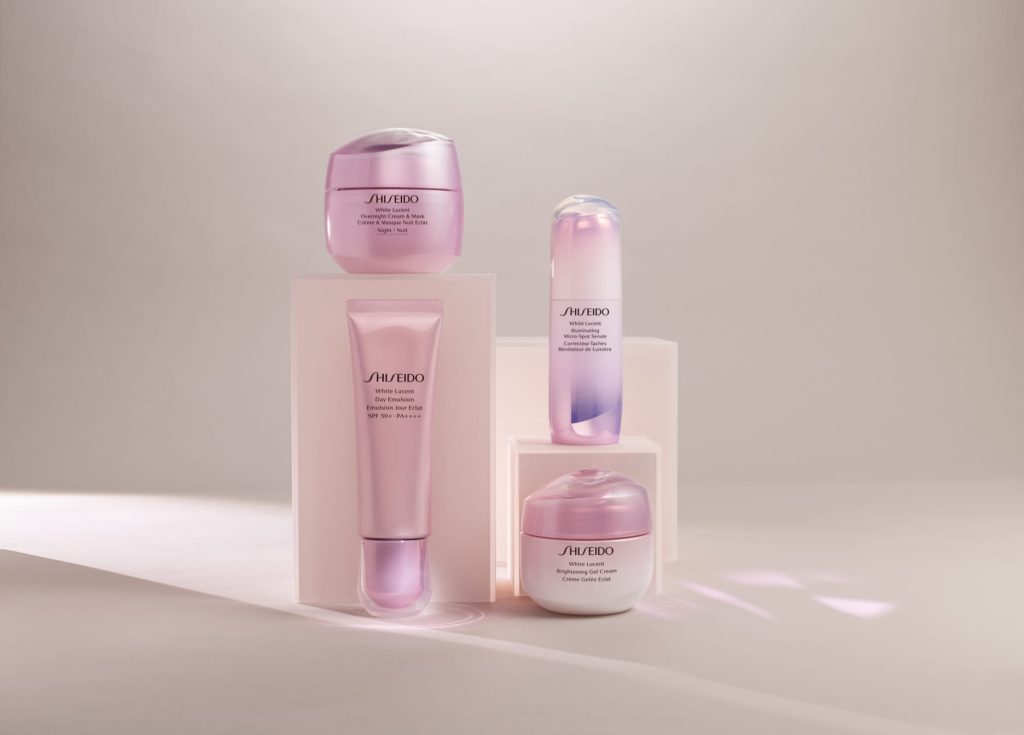
Shiseido, a renowned Japanese beauty brand, introduced its Sakura Collection, featuring a range of skincare and makeup products infused with sakura extracts. From moisturizing lotions to radiant blushes, each item promises to capture the delicate essence of cherry blossoms and enhance natural beauty. With elegant packaging adorned with sakura motifs, Shiseido’s Sakura Collection offers consumers a luxurious experience inspired by the beauty of spring.
Laneige Cherry Blossom Lip Sleeping Mask
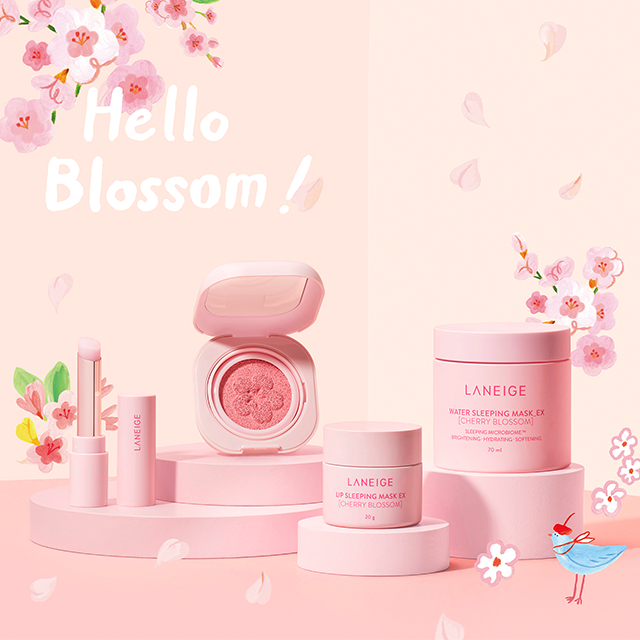
One reason for Laneige’s popularity is its ability to adapt to consumer preferences and cultural trends. By aligning its marketing efforts with cherry blossom season, Laneige, the esteemed Korean beauty brand, capitalizes on the widespread fascination with sakura, a symbol of beauty and renewal in Japanese culture. This strategic move allows Laneige to tap into consumers’ emotional connections with cherry blossoms, thereby fostering a deeper engagement with the brand.
Moreover, Laneige’s decision to play with cherry blossom season reflects its understanding of the power of seasonal marketing. Cherry blossom season is a highly anticipated time of year, marked by festivals and celebrations across Japan and beyond. By incorporating sakura into its marketing campaign, Laneige creates a sense of excitement and anticipation among consumers, driving interest in its products and increasing brand visibility.
In conclusion, Laneige’s Sakura Marketing Campaign reflects the brand’s ability to stay attuned to consumer preferences and cultural trends. By aligning its marketing efforts with cherry blossom season, Laneige seeks to enhance brand appeal, drive sales, and foster deeper connections with consumers. However, the success of this strategy ultimately depends on the brand’s ability to strike the right balance between authenticity and commercial objectives.
&honey Sakura Deep Moist Limited Set
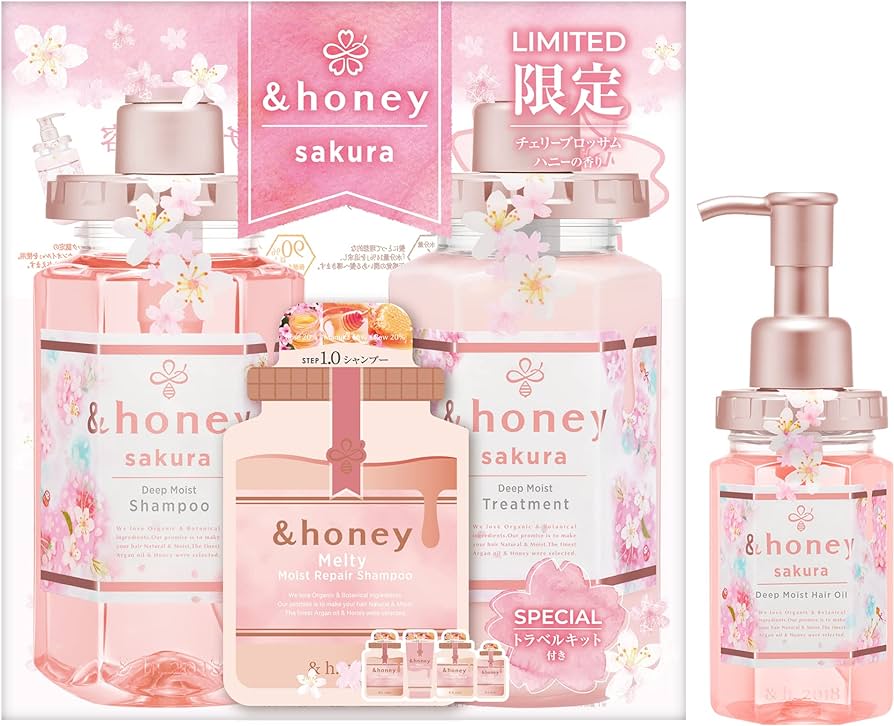
Honey, a popular skincare brand, recently launched its new Sakura Deep Moist campaign, and it has been generating a lot of buzz in the beauty community. The campaign revolves around their new Sakura Deep Moist line, which promises to provide deep hydration and nourishment to the skin using the power of Sakura extract.
The campaign features images of cherry blossom petals creating a sense of calm and serenity that aligns with the brand’s philosophy of «beauty from nature». Overall, the &honey Sakura Deep Moist Limited Set marketing campaign is a great example of how cherry blossom can be used to boost the beauty industry. With its natural and luxurious appeal, cherry blossom is sure to continue to be a popular ingredient in skincare products for years to come.
Japan is utilizing cherry blossoms to promote tourism in the country
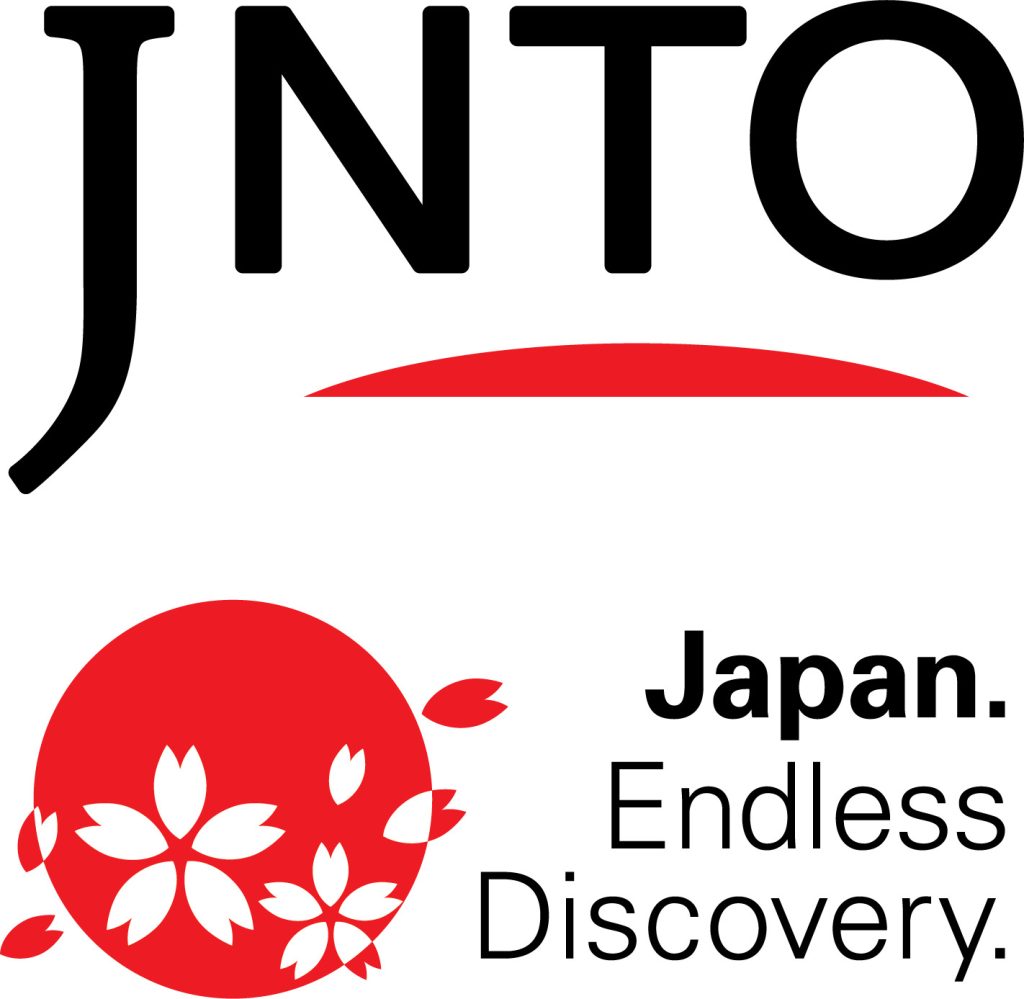
The Japan National Tourism Organization (JNTO) sakura campaign is a meticulously crafted initiative aimed at promoting Japan as a premier destination during cherry blossom season. With cherry blossoms holding significant cultural and symbolic value in Japan, the campaign seeks to leverage this natural spectacle to attract tourists from around the world.
One of the key aspects of the JNTO sakura campaign is the dissemination of information about prime cherry blossom viewing spots across Japan. Through various promotional materials, including brochures, websites, and social media platforms, JNTO highlights the best locations and times for hanami (cherry blossom viewing). This comprehensive guide allows travelers to plan their itineraries and make the most of their cherry blossom experience.
In addition to providing information about cherry blossom viewing spots, the JNTO campaign also showcases the cultural significance of hanami in Japan. Through immersive storytelling and captivating visuals, JNTO captures the essence of hanami traditions, including picnics under cherry blossom trees, nighttime illuminations, and traditional performances.
Moreover, the JNTO sakura campaign capitalizes on the allure of cherry blossoms to showcase other attractions and activities in Japan. By emphasizing the beauty of cherry blossoms as part of a larger travel experience, JNTO encourages tourists to explore beyond the cherry blossom season and discover the rich cultural heritage, culinary delights, and natural wonders that Japan has to offer.
Overall, the JNTO sakura campaign serves as a powerful tool for promoting tourism in Japan, attracting visitors from around the world to witness the breathtaking beauty of cherry blossoms and experience the unique charm of Japanese culture and hospitality.
You can visit the website of the Japan National Tourism Organization (JNTO) as a prime example of an effective tourism marketing strategy.
Marketing tips for promoting during cherry blossom season
After exploring examples with globally recognized brands, the conclusion is clear: business owners and marketers can benefit from the rare and beautiful opportunity presented by Sakura Blooming season. This extends beyond Japan to include countries like China, South Korea, and even the USA, particularly in Washington, California, and Oregon states. Marketers can benefit from cherry blossom season in several ways:
- Seasonal Promotions: Marketers can create special promotions and offers themed around cherry blossoms to attract consumers during this popular season. This could include discounts on products or services, limited-edition cherry blossom-themed merchandise, or exclusive experiences tied to hanami (cherry blossom viewing) festivities.
- Social Media Engagement: Cherry blossoms are highly photogenic and evoke a sense of beauty and tranquility. Marketers can leverage this by creating captivating social media content featuring cherry blossoms to engage with their audience. This could include sharing stunning photos, videos, or user-generated content related to cherry blossom season.
- Brand Partnerships: Marketers can collaborate with other brands or organizations to create joint promotions or events centered around cherry blossoms. This could involve sponsoring cherry blossom festivals, partnering with local businesses in hanami hotspots, or creating co-branded products with a cherry blossom theme.
- Cultural Connection: Cherry blossoms hold deep cultural significance in Japan and are associated with themes of renewal, beauty, and impermanence. Marketers can tap into these cultural associations to strengthen their brand identity and connect with consumers on a deeper level. This could involve incorporating cherry blossom motifs into branding, storytelling, or advertising campaigns to resonate with audiences.
- Tourism Marketing: For brands in the travel and tourism industry, cherry blossom season presents a valuable opportunity to promote destinations and attract visitors. Marketers can highlight cherry blossom hotspots, offer travel packages or itineraries tailored to hanami enthusiasts, and leverage the allure of cherry blossoms to showcase the beauty of a destination.
Overall, cherry blossom season offers marketers a unique and culturally rich theme to engage with consumers, drive sales, and build brand affinity. By creatively leveraging the beauty and symbolism of cherry blossoms, marketers can create compelling campaigns that resonate with audiences and leave a lasting impression.
